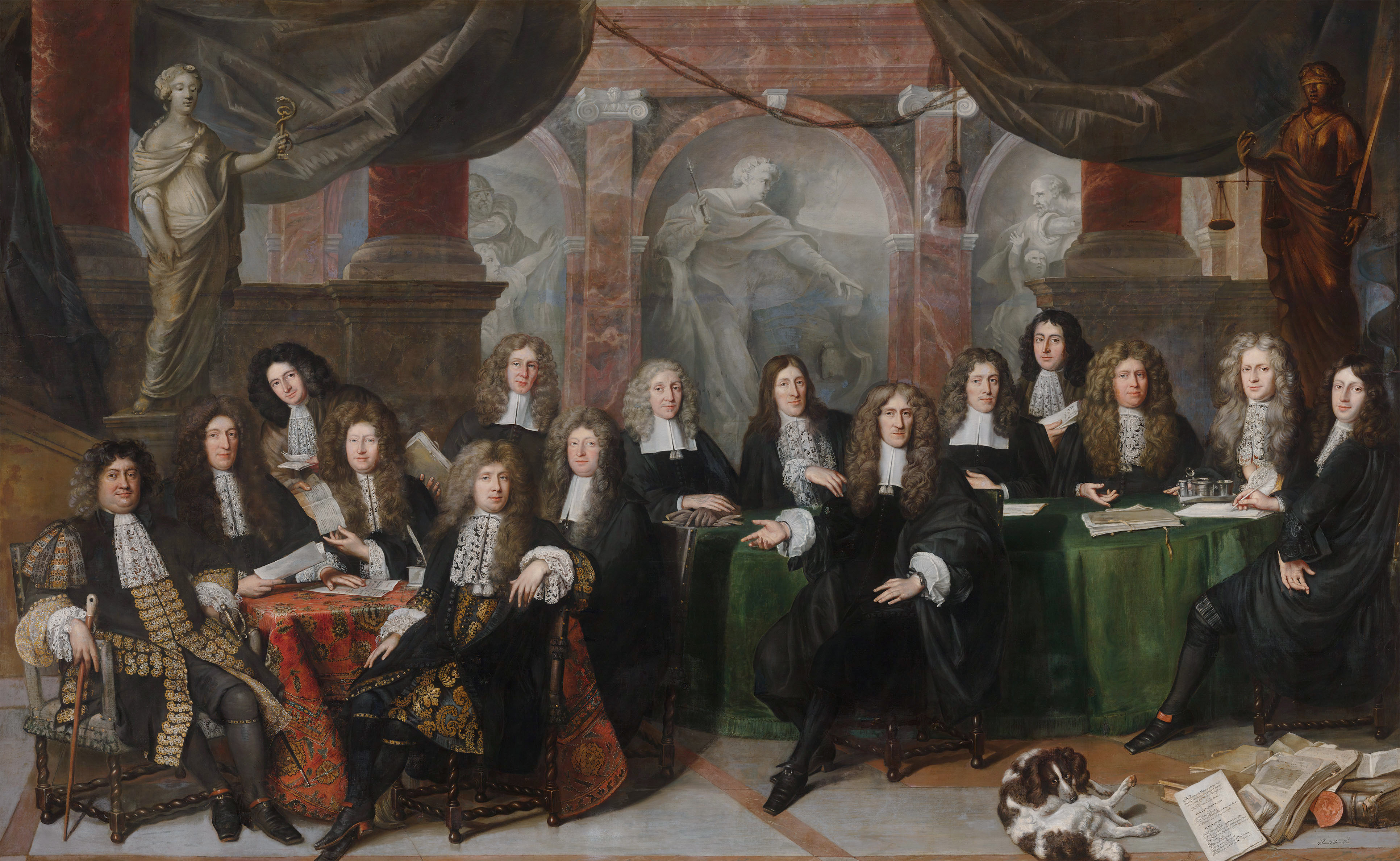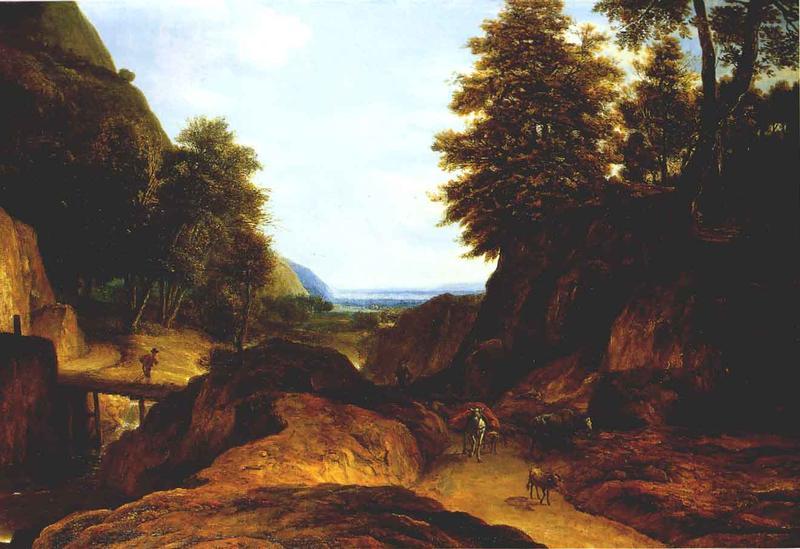|
The Corpses Of The De Witt Brothers
''The Corpses of the De Witt Brothers'' is a c. 1672–75 oil on canvas painting by the Dutch Golden Age painter Jan de Baen, now in the Rijksmuseum in Amsterdam. It shows the dead and mutilated bodies of the brothers Johan and Cornelis de Witt hanging upside down on the ''Groene Zoodje'', the place of execution in front of the Gevangenpoort in The Hague.Catalog entry in museum website Subject The two de Witt brothers, opponents of the , had dominated Dutch politics for some years, but left the country unprepared for the invasion by |
Jan De Baen
Jan de Baen (20 February 1633 – 1702) was a Dutch portrait painter who lived during the Dutch Golden Age. He was a pupil of the painter Jacob Adriaensz Backer in Amsterdam from 1645 to 1648. He worked for Charles II of England in his Dutch exile, and from 1660 until his death he lived and worked in The Hague. His portraits were popular in his day, and he painted the most distinguished people of his time. Biography Jan de Baen was born on 20 February 1633 in Haarlem, Holland, Dutch Republic. After his parents died, when he was a child, he lived with his uncle Hinderk Pyman (or Piemans) in Emden. Jan de Baen received his first painting lessons from his uncle, who was a painter himself. From 1645 to 1648 he lived in Amsterdam, where he was the pupil of painter Jacob Adriaensz Backer. After completing his training, he worked for the exiled court of Charles II of England, but upon the English Restoration of 1660 did not follow his patron, but moved to The Hague, where he worked as ... [...More Info...] [...Related Items...] OR: [Wikipedia] [Google] [Baidu] |
History Paintings
History painting is a genre in painting defined by its subject matter rather than any artistic style or specific period. History paintings depict a moment in a narrative story, most often (but not exclusively) Greek and Roman mythology and Bible stories, opposed to a specific and static subject, as in portrait, still life, and landscape painting. The term is derived from the wider senses of the word ''historia'' in Latin and ''histoire'' in French, meaning "story" or "narrative", and essentially means "story painting". Most history paintings are not of scenes from history, especially paintings from before about 1850. In modern English, "historical painting" is sometimes used to describe the painting of scenes from history in its narrower sense, especially for 19th-century art, excluding religious, mythological, and allegorical subjects, which are included in the broader term "history painting", and before the 19th century were the most common subjects for history paintings. His ... [...More Info...] [...Related Items...] OR: [Wikipedia] [Google] [Baidu] |
Paintings In The Collection Of The Rijksmuseum
Painting is the practice of applying paint, pigment, color or other medium to a solid surface (called the "matrix" or "support"). The medium is commonly applied to the base with a brush, but other implements, such as knives, sponges, and airbrushes, can be used. In art, the term ''painting ''describes both the act and the result of the action (the final work is called "a painting"). The support for paintings includes such surfaces as walls, paper, canvas, wood, glass, lacquer, pottery, leaf, copper and concrete, and the painting may incorporate multiple other materials, including sand, clay, paper, plaster, gold leaf, and even whole objects. Painting is an important form in the visual arts, bringing in elements such as drawing, composition, gesture (as in gestural painting), narration (as in narrative art), and abstraction (as in abstract art). Paintings can be naturalistic and representational (as in still life and landscape painting), photographic, abstract, nar ... [...More Info...] [...Related Items...] OR: [Wikipedia] [Google] [Baidu] |
1670s Paintings
Year 167 ( CLXVII) was a common year starting on Wednesday (link will display the full calendar) of the Julian calendar. At the time, it was known as the Year of the Consulship of Aurelius and Quadratus (or, less frequently, year 920 ''Ab urbe condita''). The denomination 167 for this year has been used since the early medieval period, when the Anno Domini calendar era became the prevalent method in Europe for naming years. Events By place Roman Empire * Lucius Aurelius Verus Augustus and Marcus Ummidius Quadratus Annianus become Roman Consuls. * The Marcomanni tribe wages war against the Romans at Aquileia. They destroy aqueducts and irrigation conduits. Marcus Aurelius repels the invaders, ending the Pax Romana (Roman Peace) that has kept the Roman Empire free of conflict since the days of Emperor Augustus. * The Vandals (Astingi and Lacringi) and the Sarmatian Iazyges invade Dacia. To counter them, Legio V ''Macedonica'', returning from the Parthian War, moves its ... [...More Info...] [...Related Items...] OR: [Wikipedia] [Google] [Baidu] |
Vanity Fair (magazine)
''Vanity Fair'' (stylized in all caps) is an American monthly magazine of popular culture, fashion, and current affairs published by Condé Nast in the United States. The first version of ''Vanity Fair'' was published from 1913 to 1936. The imprint was revived in 1983 after Conde Nast took over the magazine company. Vanity Fair currently includes five international editions of the magazine. The five international editions the magazine is United Kingdom (since 1991), Italy (since 2003), Spain (since 2008), France (since 2013), and Mexico (since 2015). As of 2018, the Editor-in-Chief is Radhika Jones. Vanity Fair is most recognized for its celebrity pictures and the occasional controversy that surrounds its more risqué images. Furthermore, the publication is known for its energetic writing, in-depth reporting, and social commentary. History ''Dress and Vanity Fair'' Condé Montrose Nast began his empire by purchasing the men's fashion magazine ''Dress'' in 1913. He renamed ... [...More Info...] [...Related Items...] OR: [Wikipedia] [Google] [Baidu] |
Jodie Comer
Jodie Marie Comer ( ; born 11 March 1993) is an English actress who rose to global prominence for her role as Oksana Astankova / Villanelle in the BBC America spy thriller ''Killing Eve'' (2018–2022). She has received various accolades including two British Academy Television Awards and a Primetime Emmy Award, in addition to nominations for two Golden Globe Awards, two Critics Choice Awards and a Screen Actors Guild Award. Born and raised in Liverpool, Comer began her career in an episode of ''The Royal Today'' in 2008. Following appearances in several television series, she landed the roles of Chloe Gemell in the E4 comedy-drama series ''My Mad Fat Diary'' (2013–2015) and Kate Parks in the BBC One drama series '' Doctor Foster'' (2015–2017). In between the series, Comer received critical acclaim for her portrayal as Ivy Moxam in the BBC Three drama miniseries ''Thirteen''. Her other major television roles include Elizabeth of York in the Starz historical miniseries '' ... [...More Info...] [...Related Items...] OR: [Wikipedia] [Google] [Baidu] |
Killing Eve
''Killing Eve'' is a British spy thriller television series, produced in the United Kingdom by Sid Gentle Films for BBC America and BBC Three. The series follows Eve Polastri (Sandra Oh), a British intelligence investigator tasked with capturing psychopathic assassin Villanelle (Jodie Comer). As the chase progresses, the two develop a mutual obsession. Based on the ''Villanelle'' novel series by Luke Jennings, each of the show's series is led by a different female head writer. The first series had Phoebe Waller-Bridge as the head writer, the second series Emerald Fennell, the third series Suzanne Heathcote and the fourth series Laura Neal. The first series premiered on BBC America on 8 April 2018, and on BBC iPlayer on 15 September 2018 through BBC Three. The third series premiered on 12 April 2020 for BBC America, and on 13 April 2020 for BBC iPlayer, and concluded on 31 May 2020. The fourth (and final) series premiered on 27 February 2022 on BBC America, 28 February 2022 o ... [...More Info...] [...Related Items...] OR: [Wikipedia] [Google] [Baidu] |
Frans Van Mieris The Elder
Frans van Mieris the Elder (16 April 163512 March 1681), was a Dutch Golden Age genre and portrait painter. The leading member of a Leiden family of painters, his sons Jan (1660–1690) and Willem (1662–1747) and his grandson Frans van Mieris the Younger (1689–1763) were also accomplished genre painters. Biography Frans was born and died in Leiden, where his father Jan Bastiaans van Mieris was a goldsmith, carver of rubies and diamond setter. [Baidu] |
Roelant Roghman
Roelant Roghman (14 March 1627 - 3 January 1692) was a Dutch Golden Age painter, sketcher and engraver. Biography Roghman was born in Amsterdam, the son of the engraver Henrick Lambertsz Roghman and Maria Jacobs Savery. His mother was a daughter of the Savery family, and Roghman became a student of his namesake and great-uncle, Roelant Savery. According to Houbraken, he only had one eye, but painted in a rough and ready way, that perhaps was the result of his eyesight. He specialized in landscapes, and in later life became a history buff, working on several prints of old castle ruins and defunct family estates based on drawings he made during travels in his youth. He was a follower of Rembrandt and Hercules Seghers. Houbraken claimed that in his youth he had been a friend of Rembrandt and Gerbrant van den Eekhout. [...More Info...] [...Related Items...] OR: [Wikipedia] [Google] [Baidu] |
Cornelis Sebille Roos
Cornelis Sebille Roos or Cornelis Roos (1754 – 1820) was a Dutch art dealer and inspector of the Nationale Konst-Gallery collection in Huis ten Bosch during the years 1799-1801 Roos was born 10 January 1754 in Amsterdam and baptized six days later in the Walloon church. He became a drawing teacher and manager of Felix Meritis, which he helped found. In 1798 he lived in the left-hand side of the Trippenhuis where he started his art dealership. Many of the paintings he originally purchased have found their way into the collection of the Rijksmuseum. He was friends with Jan Gildemeester and attended the estate sale of his art collection, buying many pieces there that later found their way in the Huis ten Bosch collection. The most notable of these was ''The Threatened Swan'' by Jan Asselijn, which became the first painting purchased by the director of the Nationale Konst-Gallery, Alexander Gogel. The painting, which is not dated, was painted before the events which caused it to be ma ... [...More Info...] [...Related Items...] OR: [Wikipedia] [Google] [Baidu] |
Alexander Gogel
Isaac Jan Alexander Gogel (10 December 1765 – 13 June 1821) was a Dutch politician, who was the first minister of finance of the Batavian Republic and the Kingdom of Holland. He married Catharina van Hasselt in 1800, and had three children. Career Gogel was born in Vught, the son of Johan Martin Gogel, a German officer in the service of the army of the Dutch Republic, and of Alexandrina Crul. He had only a limited formal education and went to Amsterdam to apprentice for a career as a merchant at age 16, at the merchant house of ''Godart Kappel en Zoon''. He started his own firm (''Gogel, Pluvinot en Gildemeester'') in 1791. Gogel was a typical "self-made man", a product of the petty-broking and merchandising world of Amsterdam. Though later one of the most prominent pioneering Dutch economists, he did not receive a formal education in this field. As a typical self-taught man he tended to borrow his ideas from all the great texts from the day, from Adam Smith to the Physiocrats. ... [...More Info...] [...Related Items...] OR: [Wikipedia] [Google] [Baidu] |



_-_The_Music_Lesson_-_WGA15633.jpg)


